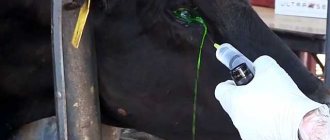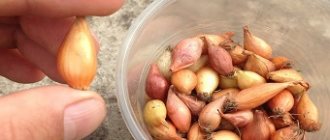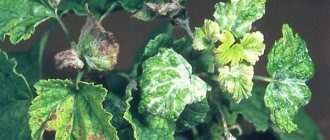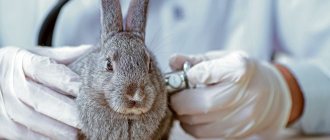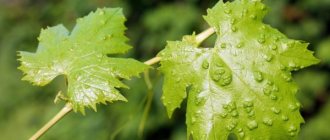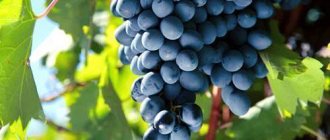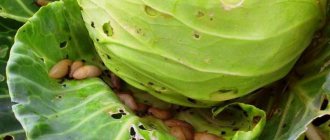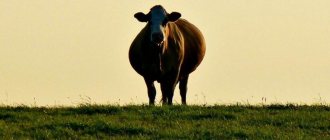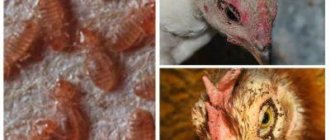Vegetable growing » Onions
0
4250
Article rating
Kira Stoletova
Onion downy mildew, or powdery mildew, is a fairly common disease. Downy mildew of garden onions is a fungal disease that attacks any part of the plant. It occurs in cold and rainy weather, when damp and wet soils form. Fungal spores can be spread by raindrops and wind over a considerable distance. It is quite difficult to identify such a disease, since at the initial stage it does not manifest itself in any way.
Downy mildew on onion
In the advanced stage, onion leaves begin to turn yellow. The disease can be first noticed at the ends of the leaves. Control measures to treat plantings should begin as soon as the first lesions on onion leaves become visible, otherwise the disease may spread to all plantings. To avoid this, it is best to carry out regular prevention and spraying against fungal infections. You can see what the disease downy mildew looks like on onions in the photo.
Causes of fungal infection
The main cause of the disease is temperature changes, especially in the morning. In the hot summer, you can forget about such a fungal disease. And if the temperature drops below +16 degrees and the humidity is at 90%, then you should expect trouble. Mostly such conditions occur at night, in late spring and early summer. The spores become more active and when the temperature rises and sunlight increases, they begin to multiply.
The incubation period for spores ranges from three to fifteen days. Accordingly, up to six generations of pests are updated during the season.
The most destructive effect is the lack of sun and fresh air. It is recommended to choose the planting site more carefully and not to thicken the plantings. It is preferable to plant onion beds in sunny places. Moisture and dampness should not penetrate these areas. Onion beds should not be watered often. Because fungal spores move with the flow of air and water: rain, abundant watering.
If onions are cultivated in greenhouse conditions, then the following recommendations must be followed:
- You should not overwater the beds, but it is better to water them in the morning.
- The greenhouse must be ventilated regularly.
- It is better to close the greenhouse at night to prevent excess moisture from entering.
- On autumn and spring days, before planting, the greenhouse must be disinfected, and the top layer of soil of 20 centimeters must be removed.
- Water should be applied under the bulb, avoiding excess liquid on the feathers.
- The greenhouse must have a constant temperature.
Signs of infection
The gardener usually finds out that the onion is affected only after a month. By this time, the infected bulb has sprouted and the first changes can be detected on the feathers of the bulb. What are the symptoms that onions have powdery mildew:
- on the leaf part you can see yellow spots, which are then covered with a grayish coating;
- the surface of the leaves gradually becomes yellow;
- green tissues lose elasticity, wither, sag, break, and after rain they turn purple;
- progressing, grayish spots increase in diameter;
- the onion looks weak, exhausted, its growth stops, and the feather part dries out completely;
- the fungus, having penetrated the bulb, does not allow it to ripen and grow to normal size;
- the tops become rough and therefore become covered with dust and dirt;
- bow arrows dry out and break;
- There are no ripe seeds in the peduncle.
See also Onion Exhibition: Planting and growing from seeds
Signs of infection can be most clearly seen in the morning, before the dew has evaporated. Bulbs affected by a fungal infection appear healthy in appearance, but begin to deteriorate during storage. Such material is a carrier of dangerous infection. The ashpelt retains its vital activity for four days.
What does peronosporosis of onion look like - description with photo
The disease starts from the tips of the leaves, spreading to all parts of the onion. Feathers develop poorly. The color of the feathers gradually changes: from pale green to yellow and purple. And the shape of the greenery is lost and distorted.
Such plants quickly become frail and inconspicuous. A diseased plant infects a healthy one. Downy mildew of annual onions affects varieties of perennial onions. But it does not affect the fragrant onion, slime.
The source of infection can be:
- contaminated plant debris;
- spores in infected bulbs;
- fungal spores in seeds;
- rhizomes of infected wild onions.
Onion bed affected by powdery mildew
Symptoms of downy mildew
The main symptom of the disease is discolored spots on the upper side of the leaf. Depending on the type of plant, the spots may be yellowish, red-brown or purple. At the same time, spots with a powdery coating form on the underside (the color ranges from light gray to purple). In some cases, symptoms may resemble those of chlorosis.
The stains are best visible after rain or heavy dew. In warm sunny weather they are practically invisible. As the disease progresses, leaves dry out, darken, become brittle, and eventually fall off despite adequate soil moisture.
Fungal spores of the pathogen overwinter in plant debris and soil. Wind, precipitation, insects, and contaminated garden tools help spread spores (which is why it is important to disinfect them). The most favorable conditions for the development of peronosporosis are cool, damp weather, usually in early spring or autumn.
Measures to combat downy mildew on onions
If an emergency occurs, it is recommended to abandon organic fertilizers, and it is better to use phosphorus and potassium additives. If necessary, moisturizing the vegetable should be reduced or stopped altogether.
During the growth period, the greens can be treated with fungicides, but should not be eaten. The cibul itself can be eaten. Before the end of the season, it is better to ensure that the feathers are moistened with a soap solution once every ten days.
Of course, chemicals are effective methods, but for safety it is better to resort to traditional, safer methods. These include whey. Mix the serum with water in a ratio of 1:10, and spray the affected greens.
If you have already decided to use chemistry, then Ridomil Gold MC will be effective. Should be used according to the attached instructions. You should always remember that this onion will later be used for food.
The fungicide Quadris is used successfully, which removes gray rot and rust.
You can use Bravo fungicide, which will also get rid of Alternaria.
Bordeaux mixture will be effective. But it can be used no later than two weeks before harvest.
Means of struggle
Chemical and biological drugs
Acrobat MC
The active components of this fungicide destroy mycelium within 2–3 days. The dosage of the drug is 20 g per 5 liters of water. Treatment is carried out in clear and windless weather with a break between sprayings of 14 days.
Thanos
4–6 g of the drug is diluted in 10 liters of water and the leaves are sprayed 3–4 times per season. The first time is for prevention; subsequent treatments are carried out at intervals of 8–12 days.
Vectra
Contact-systemic fungicide for the prevention and protection against peronosporosis. For spraying, 2–3 ml of suspension is dissolved in 10 liters of water. The maximum number of treatments per season is 3 times.
Topaz
The standard dosage of the drug for fungal infections is 2 ml per 10 liters of water. It acts on the infectious agent within 2–3 hours after treatment. The fungicide can be used in rainy weather, at low spring and autumn air temperatures.
Tsineb
The seeds are sprayed with a solution of zineb, the soil and planting material are treated. The fungicide is not dangerous to humans.
40 g of powder is diluted in 0.5 liters of water, then water is added to the working solution to a volume of 10 liters. It is recommended to alternate the fungicide with copper-containing preparations, using it before flowering begins.
Previkur Energy
New generation chemical fungicide. The drug cannot be used in tank mixtures or combined with other chemicals. To combat downy mildew, prepare a working solution by mixing 25 g of the drug and 10 liters of water. The solution is watered at the roots of vegetables and flowers 2-3 times per season.
Planriz
An effective biological product based on soil bacteria. To soak seeds, 50 ml of the suspension is diluted in 1 liter of water; for spraying vegetables and flowers, watering the soil and seedlings when planting, 100 ml of the drug is added to 10 liters of water.
Gaupsin
Biological product against fungal diseases and pests. For spraying leaves, 100-200 ml of the drug is diluted in 10 liters of water, for watering plants - 50-100 ml in 10 liters of water.
Gaupsin can be used for vegetable and flower crops, starting from the phase of 2–3 true leaves, for fruit and berry plants after bud break every 10–20 days.
Traditional methods
- At the initial stages, the mycelium, which has not yet penetrated into the vessels and tissues, is destroyed using an ash solution. A volume of 0.5 liters of ash is poured with 2–3 liters of boiling water. Leave for 2 hours, then add water, bringing the volume of the solution to 10 liters. The plants are evenly sprayed with the infusion.
- 1 liter of kefir or whey is mixed with 9 liters of water. Add 10 drops of iodine to the mixture. This iodine milk “burns out” the infectious agent.
- 50 g of soda ash is dissolved in 10 water. Adding laundry or liquid soap will increase the adhesion to the leaves when spraying.
Disease prevention
For prevention, it is good to take the following measures:
- Usually, spores safely endure all the hardships of winter, causing inconvenience in spring and summer. To prevent re-infection, you need to change the place for planting the vegetable every year. It is better to plant onions in their original place after three to four years.
- Precursors can be cabbage, pumpkin, and cucumbers. Varieties of onions: shallots, leeks, leeks - need to be planted at a decent distance from each other.
- Varieties that are not susceptible to fungus reduce the possibility of infection with peronosporosis: Antey, Stimul, Ellan, Kasatik. Seeds must be disinfected and then planted, heated at a temperature of +40 degrees for up to eight hours.
- The crop residues are completely removed from the site, and the soil must be dug up in winter.
- For preventive purposes, inspect vegetable crops.
- Do not thicken the plantings, weed and loosen them in a timely manner.
- Manure can only be applied under previous vegetables, and mineral fertilizers can be applied under the bulb.
- Only healthy seeds should be planted, discarding sick and damaged ones.
- Diseased specimens must be immediately removed and burned.
Onion feathers should be removed from the beds
In addition, antibacterial drugs for treating beds have proven themselves to be effective:
- Cycloheximide: at a rate of ten milligrams per liter of water.
- Amidomycin: in proportions of thirty milligrams per liter of water.
- Oligomycin: in the proportion of forty milligrams per liter of water.
Spray during the middle of plant growth: mid-June.
Preventive measures
Agrotechnical measures to prevent downy mildew on onions consist of following the rules of planting, growing, harvesting and storing seed material. These include:
- After harvesting, it is necessary to remove all organic residues from the soil. This applies to bulbs with roots and above-ground parts of the plant. At the slightest sign of infection, they should be burned.
- Digging up the soil will help the soil freeze in winter, which will kill the remaining mycelium.
- It is important to follow the rules of crop rotation. Plant onions in one place only after 3-4 years. The predecessors should be cucumbers, pumpkin, cabbage.
- Plantings of nigella, perennial onions and other varieties should be separated from each other.
- Practice growing onion varieties that are least susceptible to disease.
- Use healthy seeds.
- Pre-planting preparation of bulbs: heating them at 40°C for 8-24 hours.
- Periodic inspection of plants for the presence of infected specimens.
- Weeding of dense plantings, removing weeds.
- Watering in the morning, excluding evening watering.
- After harvesting, it is necessary to dry the onions until dry scales form.
- Compliance with storage conditions.
Compliance with the rules of agricultural technology, timely treatment with chemicals and folk remedies at the first symptoms of the disease will help to grow a large harvest. Prevention significantly reduces the incidence of infection. Complex treatment allows you to quickly overcome the disease.
Useful tips from summer residents
Experienced summer residents and amateur gardeners, faced with such a misfortune, solved it as follows:
- After harvesting, the bulbs are ventilated and dried.
- At the first sign, it is better to remove the infected vegetable and dust the rest of the plantings with ash.
- The place for onions should be sunny, not damp, without drafts.
- A good fertilizer for onions is a tincture of garden weeds. To do this, place the grass in a large bucket and fill it with boiling water. After four days, sprinkle the onions with infusion.
- It is not recommended to plant onions with a thick neck.
Some useful recipes can be used at the initial stage of the disease. Here are some recipes for treating onions against peronosporosis:
- Dust the feathers and protruding parts of the bulbs with ash.
- Whey from fermented milk products kills fungus. For spraying, it is mixed with water 1:10 and used for greenery.
By following the simple advice of experienced people, you can get a rich harvest of healthy onions. Fungicides should be used judiciously, but correct agricultural practices should be used wisely. Peronosporosis will be avoided, and in winter you will be able to enjoy healthy onions.
